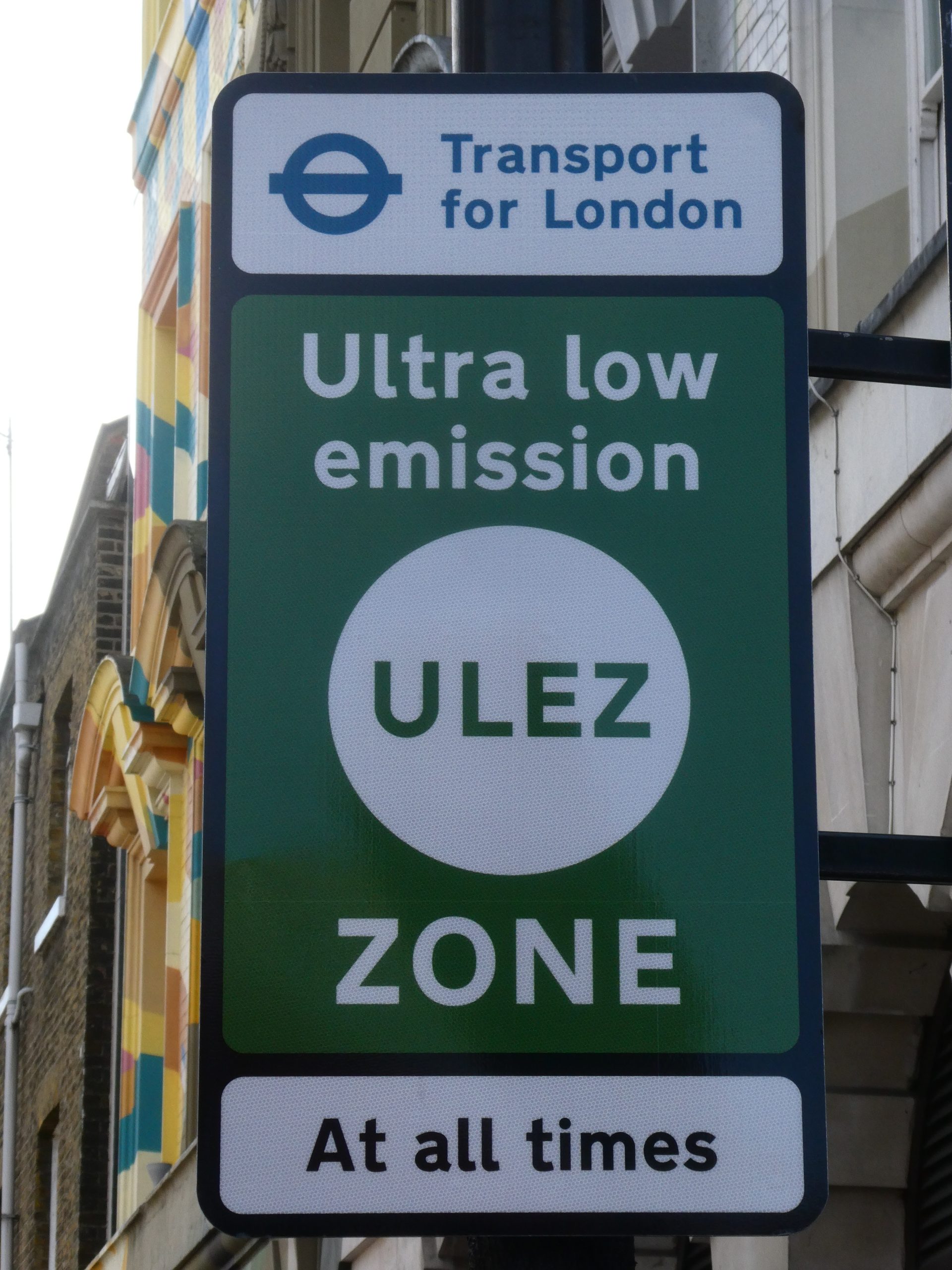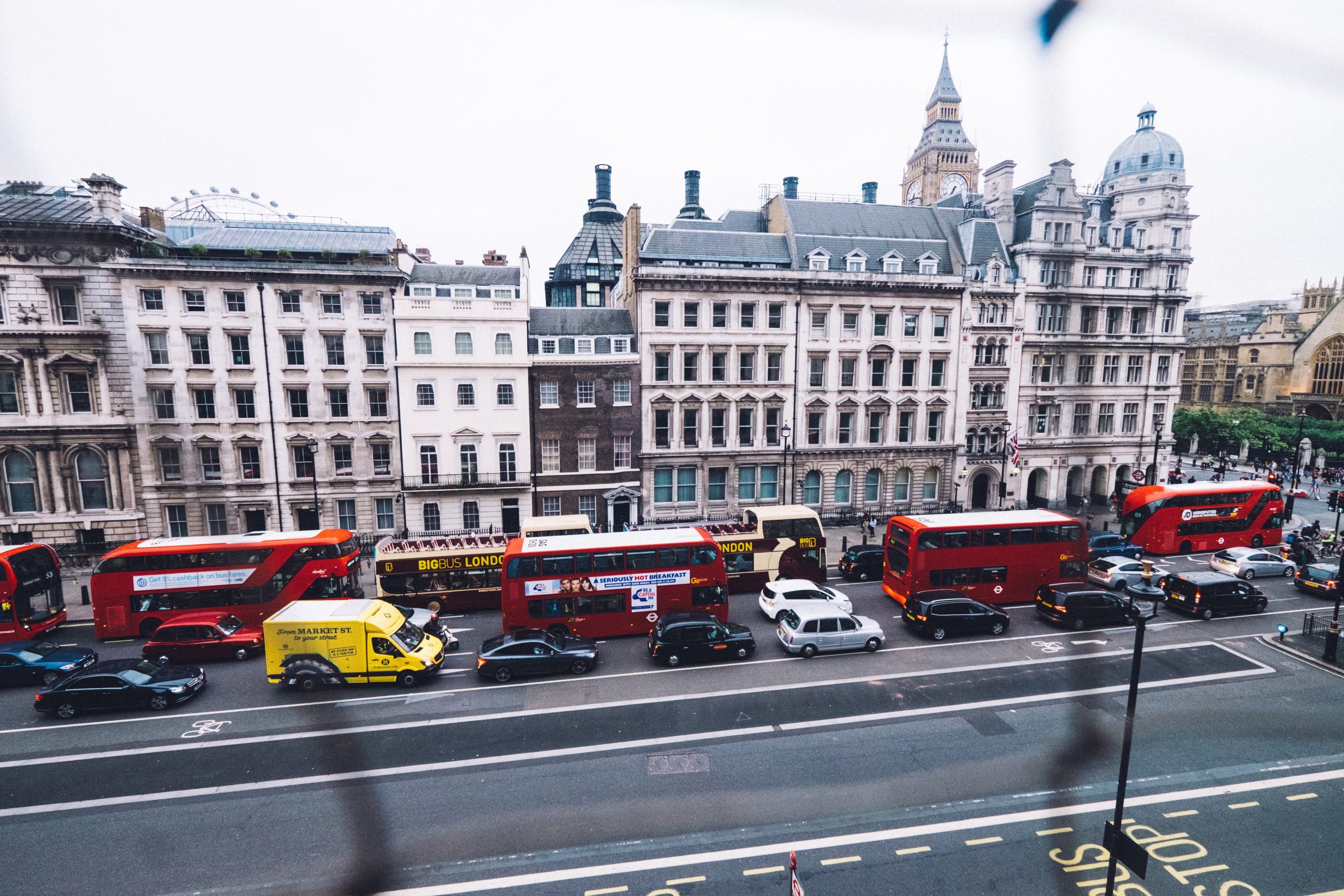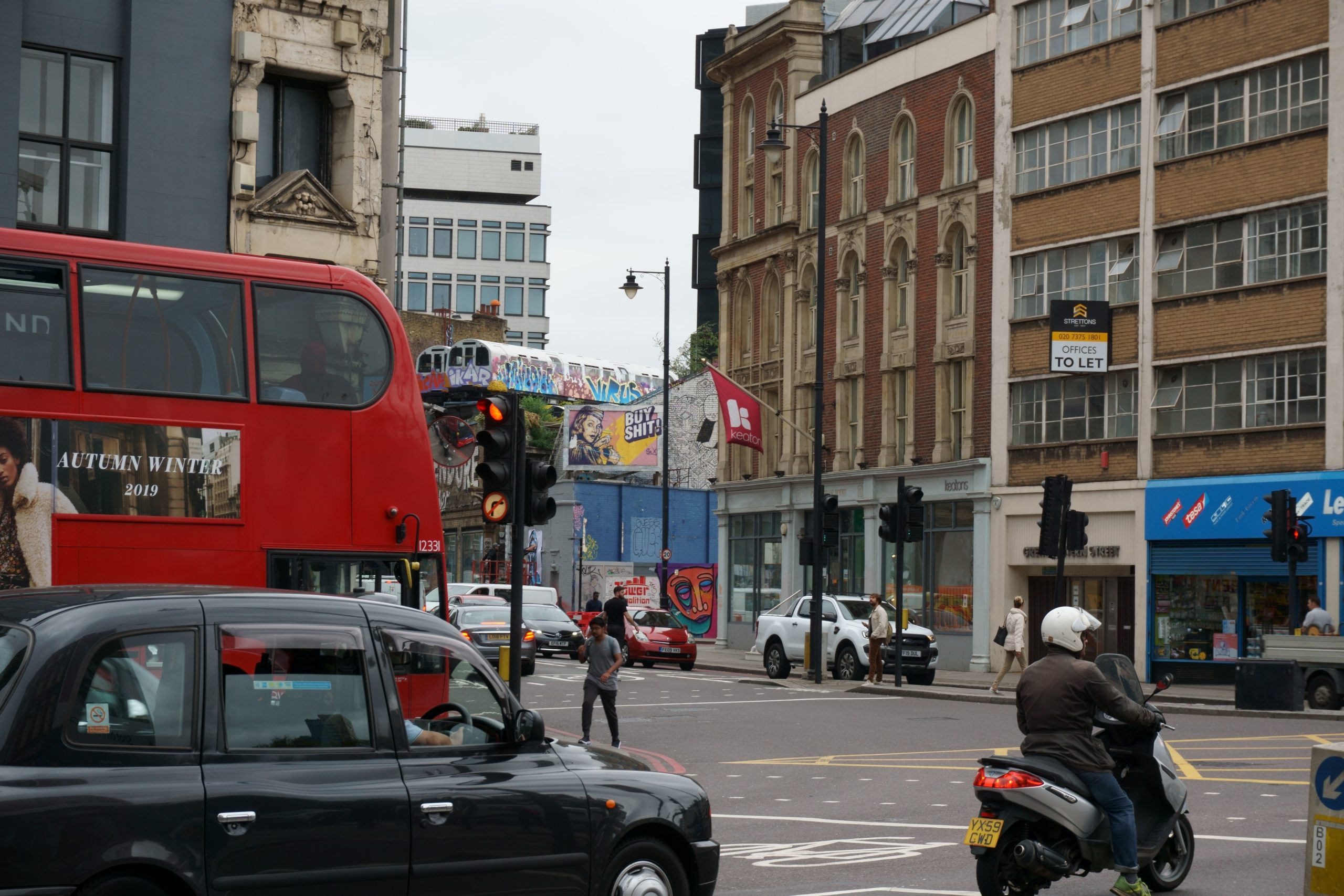
The British capital has expanded its Ultra Low Emission Zone to encompass all boroughs. That means that in the future, almost 700,000 vehicles that are currently going into London will not be allowed into the city unless they comply with strict environmental standards. Read all about the zone expansion and the criticism accompanying it.
Billboard
Skyscrapper
Halfpage
Lowering emissions from individual vehicles all over London
Since August 28th, 2023, all of London is an Ultra Low Emission Zone (ULEZ). This means that only vehicles that meet certain emission standards are allowed to enter the capital city for free. Around 690,000 vehicles that regularly use London’s streets don’t fulfil these requirements and will have to pay 12.5 GBP a day (around 14.5 Euros). Fines are up to 180 GBP. These rules also apply to tourist, which is why it is recommendable to use the online ULEZ checker when driving into London.
When London first established its Ultra Low Emission Zone in 2019, it was the first city to do so. At first, the zone covered around 21 km² in central London. It was expanded in October 2021 to cover almost 400 km² and now encompasses all of Greater London. The main intention of the ULEZ is to lower emissions from individual motorised transport such as passenger cars. With this measure, the mayor of London hopes to incentivise to other modes of transport.
Some are exempt from paying the ULEZ charge: Cars that remain parked for the day, zero emission vehicles, electric and hybrid vehicles, some historic and special vehicles, and Londoners with a disability.

The Ultra Low Emission Zone has already halved air pollution in central London
Answering to criticism relating to the ULEZ expansion, London’s mayor Sadiq Khan explained that every Londoner has a right to clean air – not just inner-city residents. The mayor belongs to the social democratic Labour Party. When talking to the BBC, Khan explained that the ULEZ is not an anti-motorist or an anti-car policy. According to him, around 90 percent of all vehicles in London already comply with emissions regulations. That means that they can enter the streets of the city for free. He also promised to make 160 million GBP available for upgrading cars.
There are numerous studies that have demonstrated the positive impact and effectiveness of low emission zones. These zones reduce nitrogen dioxide and fine particulate air pollution. In addition, they have the potential to reduce congestion and overall traffic emissions. All that, while supporting the switch to public and active transport such as walking and cycling.
Government figures show that air pollution causes up to 36,000 early deaths in the UK every year, about 4,000 of which in London. Clean air zones are one of the most effective tools in tackling air pollution – already, the ULEZ has substantially improved air quality in its area. A report showed that so far, it has reduced toxic air pollution by almost half in central London.

Fights over green issues
Traffic minister Mark Harper of the conservative Tory Party accused Khan of using the ULEZ as a way of making money to tackle London’s considerable debt. Other conservative party members have criticised the financial impacts of this scheme for drivers, especially in the face of an ongoing cost of living crisis.
However, the environmental zone was actually an idea coming from former conservative London mayor Boris Johnson. He decided to implement the ULEZ. When Khan became mayor in 2016, he started the implementation of the zone. Observers think that Tories are criticising the ULEZ expansion as part of their strategy to win votes from car drivers for the next parliamentary elections in 2024. Current surveys show that Labour are leading the polls.
So far, residents have repeatedly protested against the ULEZ expansion. Around 300 cameras have been destroyed or stolen over the last few months. “It is clear that the Conservatives’ obsession with London’s ULEZ has nothing to do with the merits or demerits of the scheme and everything to do with their desperate attempts to cling to power by trying to weaponise green issues”, Khan told the Guardian.

Hundreds of low emission zones in Europe
According to estimates, around 5 million more Londoners will now breathe cleaner air. In addition, the ULEZ will help to tackle climate change and congestion. London is also one of the cities with the best public transport in Europe. However, the city also struggles with congestion, according to the Global Traffic Scorecard evaluation. Sadiq Khan hopes that the ULEZ in combination with the congestion charge (15 GBP per day for entering certain zones during peak hours) will alleviate these issues.
Low emission zones are becoming more popular. In 2025, there might be over 500 of them in Europe as more and more cities commit to reaching net zero and improving their air quality. At the moment, there are at least 320 low emission zones, over half of them in Italy. Germany also has a large amount of these zones, whereas Spain and France currently rank low but have ambitious plans for zone implementations by 2025.
The strictness of low-emission zones varies, but experience shows that they work. The zones are particularly effective in reducing PM2.5 particulate matter, which is harmful to the lungs. Cities in France, Denmark, Norway, and the Netherlands have committed to establishing zero emission zones over the next few years. Also, London is toying with the idea of further reducing its already ultra low emissions.
Increasing air pollution gives rise to the Ultra Low Emission Zones, as the one in London. But how dow e contaminate the air and which population groups are most at risk? What are potential solutions for cleaner air?












